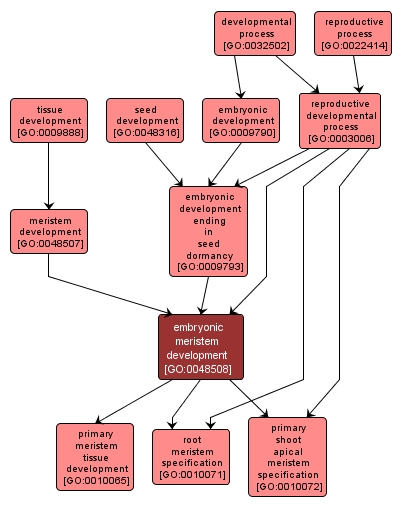GO TERM SUMMARY
|
| Name: |
embryonic meristem development |
| Acc: |
GO:0048508 |
| Aspect: |
Biological Process |
| Desc: |
The process whose specific outcome is the progression of the embryonic meristem over time, from its formation to the mature structure. |
|

|
INTERACTIVE GO GRAPH
|














